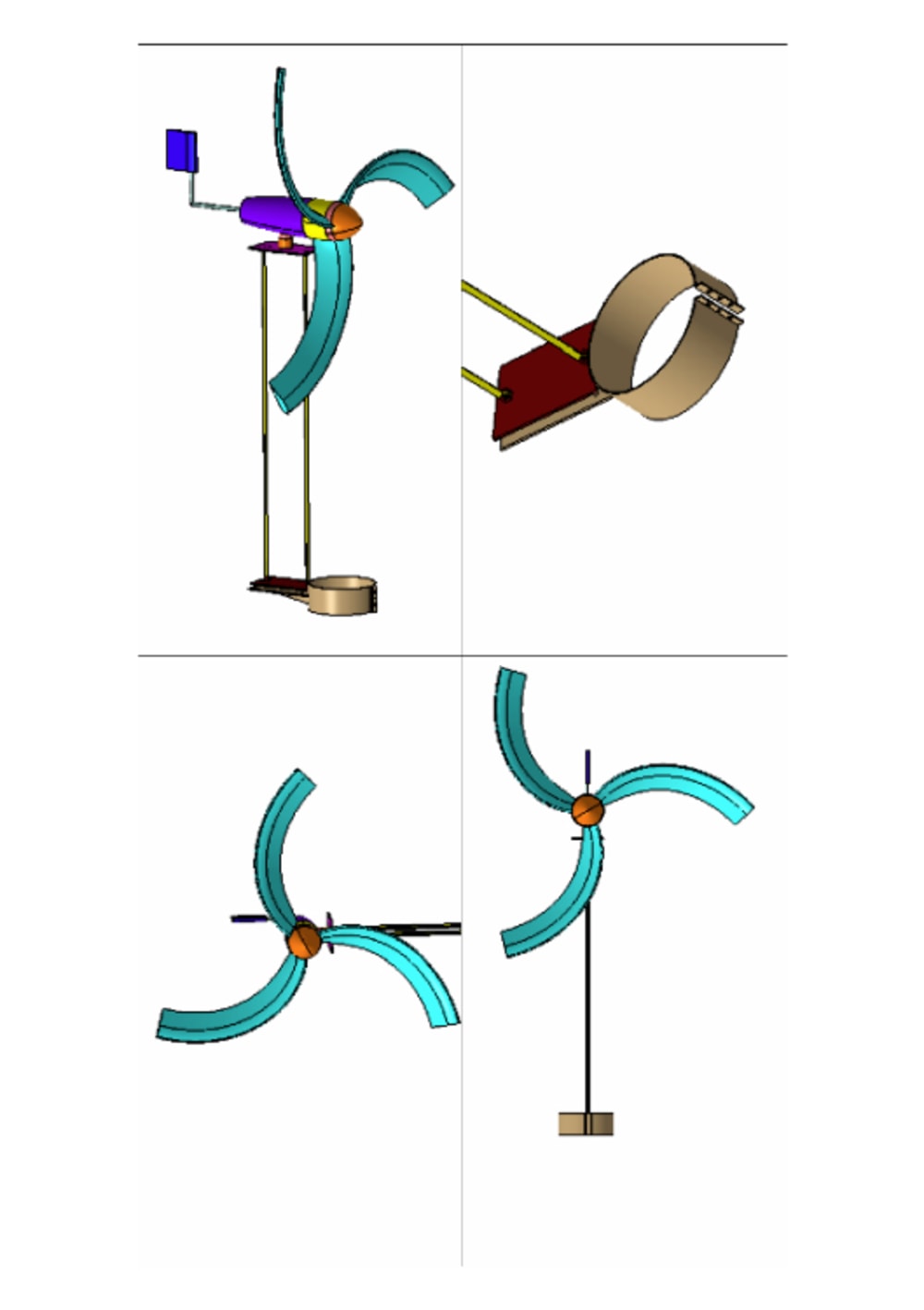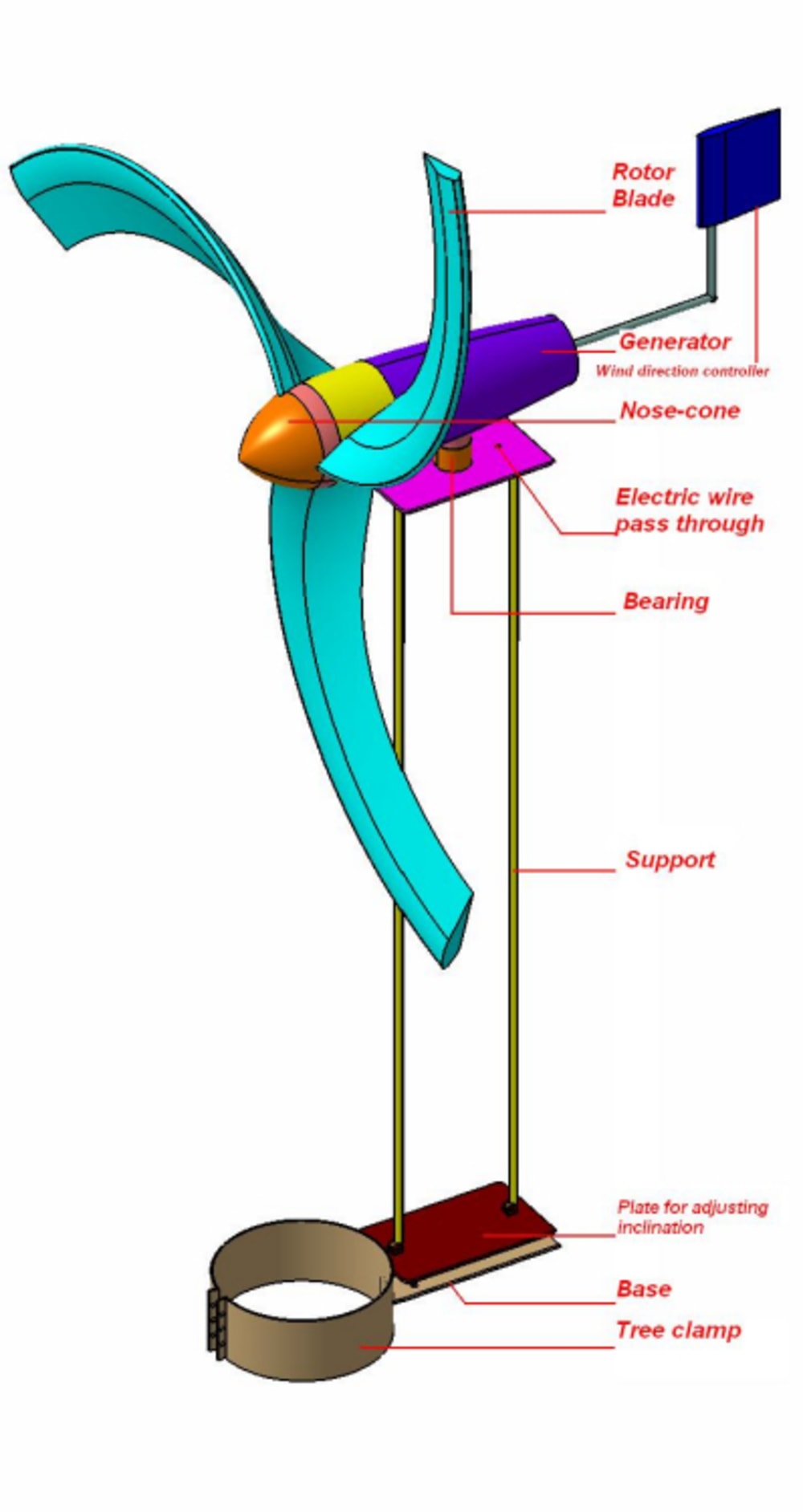Wind turbines generate power at costs comparable to fossil fuel electricity, which makes them ideal for substitution especially in remote areas. But current problems with the technology include high initial cost needed for mounting the wind turbines on a higher ground to capture higher winds. The model developed here is designed for the remote rural villages in India, where the average wind speeds are at around 5m/s (mainly in the villages of Southern India where there is a problem of grid access). The advantage we have over these rural areas is that trees are taller than many buildings and most of them are above 10m, using this as advantage if we can mount the wind turbines using the trees as a masts we can access the higher winds easily, this would provide significant saving on the mast construction.
An average household in a rural India need around 0.25-0.5kWhr/day to not to see darkness in their homes. This would require a windmill of about 3m diameter. The model shown is designed according to that standard for a rotor speed of about 1000rpm, generating around 30W per second at a wind speed of 5m/s. The rotatable HAWT is used since it has been proved to be more efficient than the VAWT technically. The entire turbine can be mounted on tall trees like coconut, palm which are very commonly found in rural India, using the clamp shown at the base,also the inclination of the nose cone can be adjusted by using screws and adjusting base plate near this clamp. The blades of the turbine follow a path of curve with each airfoil section being perpendicular to the radial direction in order to influence the torque more, the curved blades also provide higher torque compared with a straight blade of the same radius.
The fabrication and cost are inter-related, going for a high standard turbine made using plastic blades, steel-supports and a good quality Li-batteries it would cost ~Rs.14,000/($310), per wind turbine, but such a turbine would be unaffordable for rural Indian homes. Considering alternatives in the fabrication and assembly, by avoiding complexities of inclination, having a generator of lesser standard, substituting Li-batteries by common lead-acid and by changing the material of the rotor blades to that of thin plastic sheets and dry palm leaves, we can reduce the cost to even Rs.5,000/($110). This would be a more affordable cost to them and the break even occurs in 5-6 yrs, with frequent change of the rotor blades once in 6 months. (Estimates done assuming people pay Rs.4/- per unit electric consumption). The turbine is assembled with the clamp mounted on the tree and the supports being vertical to the ground.
Like this entry?
-
About the Entrant
- Name:Govinda Balan K
- Type of entry:individual
- Hardware used for this entry:HP Compaq PressarioSoftware used for this entry:CATIA
- Patent status:pending





